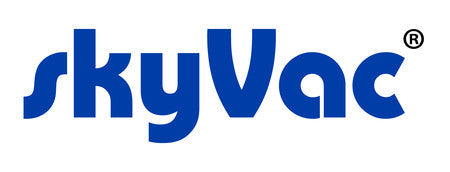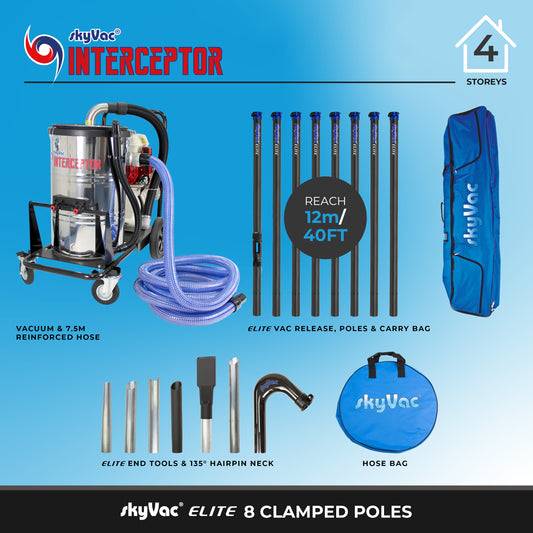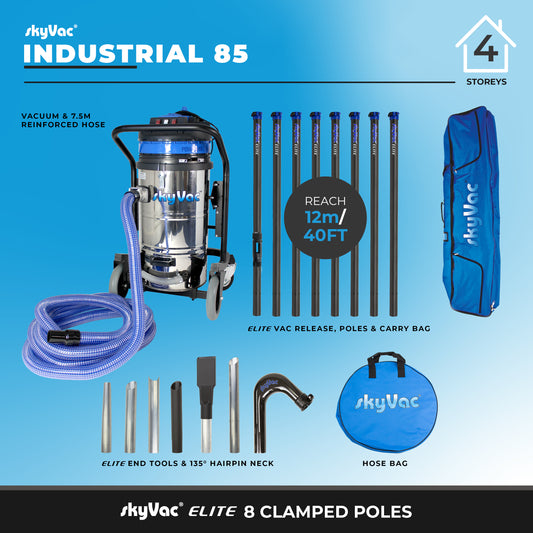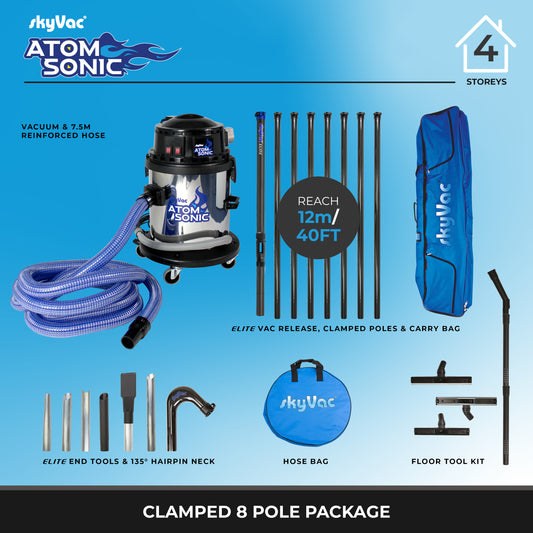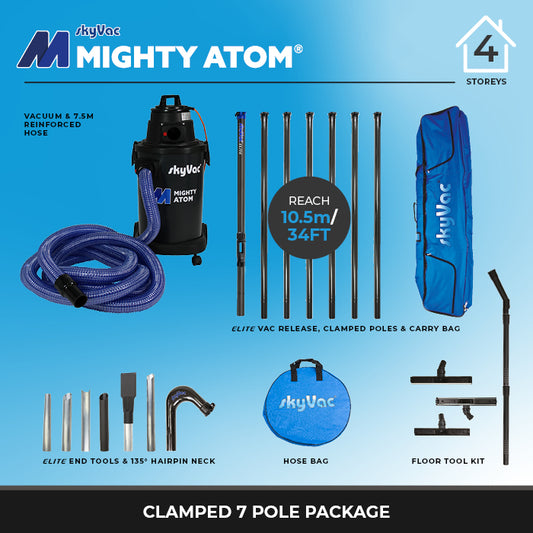Boosting Energy Efficiency Through Proper High Dusting
Share
High dusting is often overlooked when it comes to maintaining energy efficiency in buildings. Dust and debris accumulate in high places, like ceilings and ductwork, leading to increased energy consumption and reduced air quality. By understanding the importance of regular high dusting, we can take steps to improve energy efficiency and create a healthier environment. In this article, we’ll explore how proper high dusting can lead to significant energy savings, the tools you need, and how to implement an effective high dusting schedule.
Key Takeaways
- Regular high dusting can improve air quality and reduce energy costs.
- Using the right tools makes high dusting easier and more effective.
- Creating a scheduled high dusting routine helps maintain optimal energy efficiency.
Understanding High Dusting and Its Impact on Energy Efficiency
The Importance of Regular High Dusting
Okay, let's talk about why high dusting is actually a big deal. It's easy to overlook those out-of-reach spots, but neglecting them can have real consequences. We're not just talking about aesthetics here; we're talking about the air we breathe and the energy we use. Think about it: dust settles everywhere, including on light fixtures, HVAC systems, and even machinery. When dust accumulates, it acts like an insulator, trapping heat and reducing the efficiency of these systems. Regular high dusting helps to maintain a cleaner, healthier, and more energy-efficient environment. It's a simple task that can lead to significant improvements in the long run. For commercial spaces, high dusting systems offer a multitude of benefits, including improved air quality and enhanced safety.
How Dust Accumulation Affects Energy Use
Dust might seem harmless, but it's a sneaky energy thief. When dust settles on light fixtures, it can block a significant amount of light, forcing us to use more energy to achieve the same level of illumination. HVAC systems are also heavily impacted. A layer of dust on the coils makes it harder for the system to transfer heat, causing it to work harder and consume more energy. This not only increases our energy bills but also shortens the lifespan of the equipment. Even the ductwork can be affected; if we lean too far to a duct system that is larger in diameter than needed, the dust will tend to fallout into the bottom of ductwork and cause dust buildup. The buildup will start to decrease the cross sectional area of the duct as the buildup increases. This decrease in cross section area results in the increase of air losses with higher velocities in the duct work. This only compounds the energy losses of the system to generate the same dust collection performance. To combat this, consider professional-grade solutions like the SkyVac series for tackling dust in various environments. Here's a quick look at how dust impacts different systems:
- Lighting: Reduced brightness, increased energy consumption.
- HVAC: Decreased efficiency, higher energy bills, potential for overheating.
- Machinery: Overheating, reduced performance, increased wear and tear.
Tools and Techniques for Effective High Dusting
Choosing the Right Equipment
When it comes to high dusting, having the right tools can make all the difference. We've found that a combination of equipment often works best, depending on the specific environment and the type of dust you're dealing with. For example, in workshops or labs, where harmful emissions are common, using an adjustable extraction arm positioned near the source of pollution is a great idea. It's all about capturing those particles before they spread.
Here's a quick rundown of some essential tools we rely on:
- Extension Poles: These are a must for reaching high ceilings and light fixtures. We prefer lightweight carbon fiber poles for ease of use, especially when working at extended heights. The Elevate Carbon Fiber Pole is a great option.
- Microfiber Dusters: These are excellent for attracting and trapping dust without scratching surfaces. Look for ones with flexible heads to reach awkward angles.
- Vacuum Systems with Attachments: A vacuum with a HEPA filter is crucial for capturing fine dust particles. We use various attachments, such as crevice tools and brush heads, to tackle different surfaces and areas.
- Specialized Brushes: For those hard-to-reach spots, like around pipes and ducting, curved ducting brushes are invaluable. We also keep half-round pipe brushes on hand for thorough cleaning.
Best Practices for High Dusting
Okay, so you've got the gear. Now, let's talk technique. Proper high dusting isn't just about waving a duster around; it's about systematically removing dust to prevent it from resettling. We always start by planning our approach.
Here are some best practices we stick to:
- Work from Top to Bottom: Dust falls, so start with the highest surfaces and work your way down to avoid re-dusting areas you've already cleaned.
- Use Proper Vacuuming Techniques: When vacuuming, use overlapping strokes to ensure you're picking up all the dust. For extraction arms, always position the hood as close to the pollution source as possible.
- Clean in Sections: Divide the area into manageable sections and focus on one section at a time. This helps ensure thoroughness and prevents you from feeling overwhelmed.
- Regularly Clean or Replace Dusters: A dirty duster just spreads dust around. We clean our microfiber dusters frequently and replace them when they lose their effectiveness.
Implementing a High Dusting Schedule
Consistency is key when it comes to high dusting. We've found that establishing a regular schedule helps prevent excessive dust buildup and keeps our energy systems running efficiently. The frequency of your schedule will depend on several factors, including the environment, the level of activity, and the type of dust present.
Here's how we approach scheduling:
- Assess the Environment: Consider the amount of dust generated in the area. High-traffic areas or those with industrial activity will require more frequent dusting.
- Create a Checklist: Develop a detailed checklist of all the areas that need to be dusted, including ceilings, light fixtures, ducts, and high shelves.
- Set a Frequency: Based on your assessment, determine how often each area needs to be dusted. Some areas may require weekly dusting, while others can be done monthly or quarterly.
- Track Progress: Keep a record of when each area was last dusted to ensure that you're sticking to your schedule. This also helps you identify any areas that may need more frequent attention.
Maximizing Energy Savings Through High Dusting
Identifying Energy Losses
Okay, so where exactly does all that energy leak out because of dust? Well, it's not always obvious, but it's definitely happening. One of the biggest culprits is lighting. Dust buildup on light fixtures and bulbs can drastically reduce their output. We're talking about a significant decrease in brightness, which then forces us to use more lights, or higher wattage bulbs, to compensate. It's a vicious cycle! Think about it: you're essentially paying more to get less light, all because of a little bit of dust. Another area where dust causes energy waste is with HVAC systems. Dust accumulating on vents and ducts restricts airflow, making your heating and cooling systems work harder to maintain the desired temperature. This extra strain translates directly into higher energy bills. Plus, a dusty environment can impact the efficiency of appliances and equipment, causing them to consume more power than necessary. It's like running a marathon with a backpack full of bricks – everything just takes more effort. To avoid this, consider purchasing a high dusting system that can help you reach those hard-to-clean areas.
Implementing a High Dusting Schedule
Alright, so we know why high dusting is important, but how do we actually make it happen? The key is to create a schedule and stick to it. We recommend starting with a thorough initial cleaning to remove all existing dust and debris. Then, establish a regular maintenance schedule based on the specific needs of your environment. For example, high-traffic areas or spaces with a lot of machinery might require more frequent dusting than others. Here's a simple schedule we like to follow:
- Weekly: Dust light fixtures and ceiling fans.
- Monthly: Clean vents and high shelves.
- Quarterly: Deep clean all high surfaces and hard-to-reach areas.
Consistency is key. Set reminders for ourselves, and make it a part of our routine. Also, don't forget to document our efforts. Keeping track of when and where we've dusted can help us identify problem areas and adjust our schedule accordingly. It's also a good idea to invest in the right equipment. A good high dusting system can make the job easier and more efficient. Remember, a little bit of prevention goes a long way in saving energy and money. By following a consistent high dusting schedule, we can keep our spaces clean, efficient, and comfortable.
Keeping your space clean can help save energy! High dusting, which means cleaning hard-to-reach areas, can make your heating and cooling systems work better. When dust builds up, it can block airflow and make your systems work harder, using more energy. So, take some time to clean those high spots and see the difference in your energy bills. Want to learn more about saving energy? Visit our website for tips and tricks!
